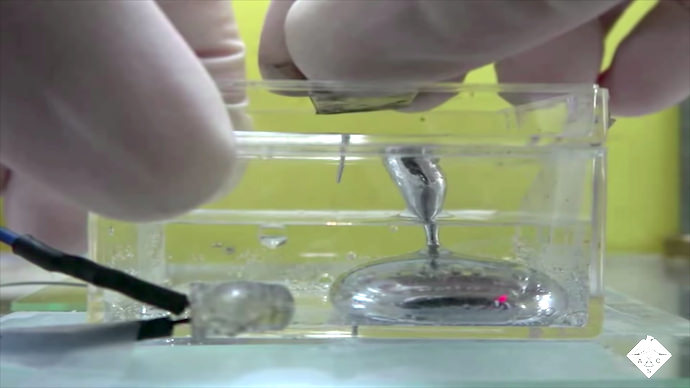Growing up, I wanted to be like Alex Mack—an ordinary teenager who could shoot electricity from her fingertips and morph into a blob of goo.
Science is no closer to making my childhood dream a reality (as far as I know). But researchers have found a way to manipulate liquid metals in 3D space with magnets.
Metals that are liquids at room temperature have unique properties—high conductivity, low melting point, high deformability—that make them attractive for use in soft robotics and flexible electronics.
By adding a pinch of nickel or iron, analysts can manipulate the material with magnets, which, frankly, is super cool.
It’s also super restrictive, though. Due to high surface tension, most magnetic liquid metals can move only from side to side, and must be immersed completely fluid to avoid forming a paste.
Researchers in Beijing wanted to break free of those shackles to create a component they can move and stretch horizontally and vertically, without full saturation.
And they did.
Working first with the material submersed in liquid, the team was able to lower surface tension and stretch the droplet almost four times its resting length. They also managed to connect two immersed, horizontal electrodes to light up an LED bulb.
The real breakthrough, however, came when researchers found they could stretch the liquid metal vertically, and move it horizontally to connect two electrodes—one exposed to air, the other in hydrochloric acid.
“This demonstrated that the material didn’t have to be fully immersed in liquid,” according to the American Chemical Society (ACS). “In this way, the magnetic liquid metal was reminiscent of an upright walking amphibian, the researchers say.”
The team includes members of the Beijing Advanced Innovation Center for Biomedical Engineering, Beihang University, Tsinghua University, and the Chinese Academy of Sciences.












